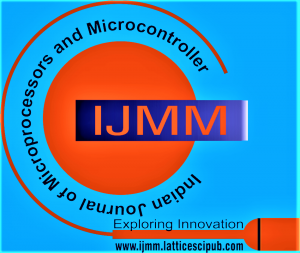![]()
Scientific Assessment of Locally and Factory Built 2 KVA Modified Sine Wave Solar Powered Inverters
Adeoye O. S1, Yusuf, B. M2, Ogunsakin, O3
1Adeoye O. S, Department of Electrical and Electronic Engineering, Federal Polytechnic Ado Ekiti.
2Yusuf, B. M, Department of Electrical and Electronic Engineering, Federal Polytechnic Ado Ekiti.
3Ogunsakin, O, Department of Electrical and Electronic Engineering, Federal Polytechnic Ado Ekiti.
Manuscript received on 02 March 2023 | Revised Manuscript received on 13 March 2023 | Manuscript Accepted on 15 March 2023 | Manuscript published on 30 March 2023 | PP: 1-12 | Volume-3 Issue-1, March 2023 | Retrieval Number: 100.1/ijmm.D40570412423 | DOI: 10.54105/ijmm.D4057.033123
Open Access | Editorial and Publishing Policies | Cite | Mendeley | Indexing and Abstracting
© The Authors. Published by Lattice Science Publication (LSP). This is an open access article under the CC-BY-NC-ND license (http://creativecommons.org/licenses/by-nc-nd/4.0/)
Abstract: This paper presents scientific assessment of locally and factory built 2 kvA modified sine wave inverters. A data logger known as DENT ELITE PRO SP which was connected across the two solar inverters to collect relevant data. The captured data were harmonic distortion, voltage and current variation in the outputs of the solar inverters. An integrated circuit (IC) SG3524 was used to generate the necessary pulse needed to drive the MOSFET (3205IRF) to alternate the direct current (DC) supply. The output from the oscillator stage was amplified using power transistor MOSFET. The frequency at which circuit operate is determined with the oscillator stage. There were different points of interception for both current and voltage for both types of inverters over a stipulated period. The assessment summarily showed that the measurements for the factory made inverter range from 226.044V to 230.811V and these values were within the nominal voltage. However, for locally made inverter, the voltage measurements for the period under consideration were within 215.189V and 221.599V and this depicts a slight deviation from the nominal voltage values. The result showed that the factory built inverter is superior to the locally fabricated type and this implies that there should be improvement in the design of oscillating stage and the determination of the drain current of the MOSFET should be accurate.
Keywords: Harmonic, Voltage, Current, Inverter, Waveform
Scope of the Article: Microprocessor and Microcontroller System
